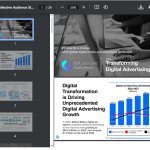The U.S. Federal Reserve, at its recent Federal Open Market Committee (FOMC) meeting, decided to maintain interest rates at 5.25-5.5 percent, which marks a 22-year high. The decision was influenced by the rapid rise in long-term U.S. Treasury bond yields in recent months, which has prompted market concerns. In this report, we delve into the Fed’s rationale for this choice and the factors impacting the current monetary policy.
Economic Activity and Yields
The FOMC stated that “recent indicators suggest that economic activity expanded at a strong pace in the third quarter.” This is an important observation, as robust economic activity has been one of the key factors affecting the Fed’s monetary policy decisions. Job gains, while moderating from earlier in the year, have remained strong, and the unemployment rate continues to be at a low level. At the same time, inflation remains elevated, further complicating the Fed’s decision-making process.
Rising Treasury Yields
A significant factor influencing the Fed’s decision has been the swift surge in long-term U.S. Treasury yields. Since the last rate hike in July, yields on 10-year Treasury bonds have risen by almost one percentage point, reaching 5 percent for the first time since 2007. Fed Chairman Jerome Powell had recently suggested that these rising long-term yields could partially substitute for additional rate increases, an idea aimed at achieving a balance in monetary policy.
A Shift in Fed’s Pace
This year, the Fed has adjusted its rate-hiking pace in response to changes in economic conditions. After a pause in rate hikes in June, the central bank raised rates by 25 basis points in July. The September meeting saw the Fed holding the benchmark rate steady. The recent decision to keep rates unchanged marks two consecutive meetings without a rate hike, a departure from the earlier trend of aggressive monetary tightening.
A Restrictive Monetary Policy
According to Powell, the Fed’s stance of monetary policy has become restrictive. This means that tight policy measures are exerting downward pressure on economic activity and inflation. However, the full impact of these measures on inflation is yet to be realized. Inflation had been running high in 2022, but it has since moderated. Powell noted that it would take more than a few months of favorable data to build confidence that inflation is moving sustainably toward the Fed’s 2 percent target.
Inflation Concerns Persist
Key inflation data revealed that total personal consumption expenditures (PCE) prices increased by 3.4 percent over the 12 months ending in September. When volatile food and energy categories are excluded, core PCE prices rose by 3.7 percent. Both figures substantially exceed the Fed’s 2 percent long-term inflation goal. Powell emphasized that the process of achieving sustainable 2 percent inflation still has a long way to go. The Fed remains watchful, with an eye on potential future rate hikes.
Yields and Monetary Policy
The Fed is closely monitoring the surge in long-term yields, which has contributed to the tightening of broader financial conditions since the summer. Powell noted that persistent changes in broader financial conditions can have implications for the path of monetary policy. This suggests that the Fed is attuned to the evolving market dynamics as it navigates the complexities of setting monetary policy.
Conclusion
The Federal Reserve’s decision to leave interest rates unchanged reflects a delicate balancing act in the face of rising Treasury yields and evolving economic conditions. While strong economic activity and persistently high inflation remain concerns, the central bank is also cautious about the impact of tighter monetary policy. The Fed’s approach will likely continue to adapt to the ever-changing economic landscape.
The relationship between inflation and interest rates is a fundamental aspect of macroeconomics. These two economic indicators are closely intertwined and have a significant impact on the overall health of an economy. In this report, we will explore the dynamics of inflation and interest rates, their interplay, and how policymakers respond to these critical economic factors.
Understanding Inflation
Inflation is the rate at which the general price level of goods and services in an economy increases over a specified time period. It is often expressed as an annual percentage and is a natural occurrence in most economies. Mild inflation is generally considered a sign of a healthy economy, as it indicates rising demand for goods and services.
The Role of Interest Rates
Interest rates, on the other hand, are the cost of borrowing money or the return on investment for savers and investors. Central banks, such as the U.S. Federal Reserve, use interest rates as a tool to influence economic conditions. By changing interest rates, central banks can control the flow of money in the economy, impacting borrowing, lending, and spending behaviors.
The Trade-Off
The relationship between inflation and interest rates is often described as a trade-off. This trade-off illustrates that when inflation is on the rise, central banks are more likely to increase interest rates to keep inflation in check. Conversely, when inflation is low or falling, central banks may lower interest rates to stimulate economic activity.
Why Central Banks Respond to Inflation
Central banks aim to maintain price stability and control inflation. When inflation rises significantly, it erodes the purchasing power of consumers and reduces the value of money. High inflation can disrupt economic stability, deter investment, and lead to uncertainty in financial markets. To counter these effects, central banks increase interest rates to reduce borrowing and spending, which, in turn, can help lower inflation.
The Impact on Borrowing and Spending
Higher interest rates lead to more expensive borrowing, whether for consumers taking out mortgages or businesses seeking loans for expansion. This discourages borrowing and can reduce consumer spending and business investment. As a result, economic growth may slow down or even contract.
Conversely, when central banks lower interest rates, borrowing becomes cheaper. This stimulates spending and investment, encouraging economic growth. However, it can also lead to an increase in inflation if not carefully managed.
The Role of Expectations
Inflation expectations play a crucial role in this dynamic. If consumers and businesses expect high future inflation, they may demand higher wages or raise prices, creating a self-fulfilling prophecy. Central banks must monitor and manage these expectations to keep inflation under control.
The Impact on Savers and Investors
While higher interest rates may reduce borrowing, they can benefit savers and investors by providing more substantial returns on savings and investments. Lower interest rates, conversely, can be detrimental to savers who receive lower returns on their investments.
Conclusion
Inflation and interest rates are intertwined in a complex dance that defines the economic landscape. Striking the right balance between these two forces is a challenging task for central banks. Policymakers must carefully consider the trade-offs and potential consequences of their decisions to ensure the overall health and stability of their economies. The relationship between inflation and interest rates remains a key area of focus for both economic analysts and policymakers around the world.









